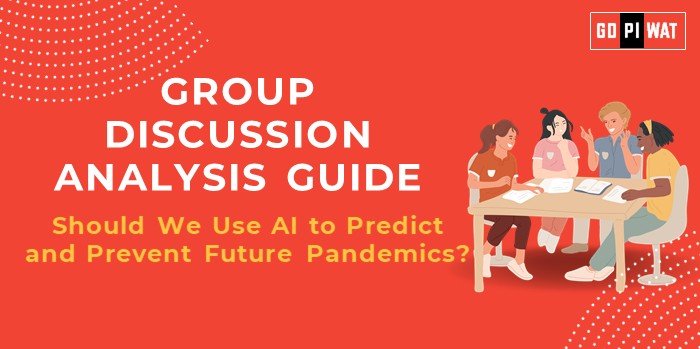📋 Group Discussion Analysis Guide: Should We Use AI to Predict and Prevent Future Pandemics?
🌐 Introduction to the Topic
- Opening Context: “The COVID-19 pandemic underscored the potential for technology, particularly AI, to anticipate and mitigate health crises. As the global population faces rising risks of pandemics due to factors like climate change and urbanization, leveraging AI in this domain has become a critical discussion.”
- Topic Background: AI offers tools such as predictive modeling, real-time monitoring, and automated response strategies. Notable applications include early detection systems for diseases like COVID-19 and Ebola, highlighting AI’s transformative role in public health.
📊 Quick Facts and Key Statistics
- 📈 AI Market in Healthcare: Valued at $14 billion in 2023, expected to grow at 20% CAGR.
- ⚠️ Pandemic Risk Increase: WHO states the frequency of pandemics has tripled in the last century.
- 🔍 AI in Disease Surveillance: Systems like BlueDot flagged COVID-19 days before official alerts.
- 💰 Global Health Spending on AI: Over $3 billion annually allocated to pandemic readiness.
👥 Stakeholders and Their Roles
- 🏛️ Governments: Invest in AI research, fund public health initiatives.
- 💻 Private Tech Companies: Develop AI tools and collaborate on data sharing.
- 🌍 Global Organizations: WHO and CDC ensure ethical implementation and global cooperation.
- 👨⚕️ Healthcare Providers: Adopt AI-driven diagnostics and interventions.
- 🙋♀️ Citizens: Contribute data and follow AI-driven guidelines.
🏆 Achievements and Challenges
✨ Achievements
- BlueDot Success: Predicted COVID-19 in Wuhan days before WHO’s alert.
- AI in Vaccination: Accelerated vaccine development using molecular analysis.
- Global Partnerships: Initiatives like GISAID utilize AI for genomic data sharing.
⚠️ Challenges
- Ethical Concerns: Data privacy and bias in algorithms.
- Infrastructure Gaps: Limited access to AI in low-income countries.
- Over-reliance on Technology: Risk of neglecting traditional surveillance.
🌍 Global Comparisons
- 🇰🇷 South Korea: Effective use of AI in contact tracing.
- 🇺🇸 US: Success with AI in mRNA vaccine design.
📖 Case Studies
BlueDot: Early detection of COVID-19.
South Korea: AI-driven COVID-19 response.
📚 Structured Arguments for Discussion
- 💪 Supporting Stance: “AI can revolutionize pandemic prevention by providing real-time data insights, reducing response time, and improving resource allocation.”
- ❌ Opposing Stance: “The misuse of AI can lead to privacy violations, and its benefits may not be equitably distributed across nations.”
- ⚖️ Balanced Perspective: “AI’s potential in pandemic prevention is immense, but ethical frameworks and infrastructure readiness are prerequisites.”
💡 Effective Discussion Approaches
- 📊 Opening Approaches:
- “Did you know that AI detected COVID-19 days before WHO’s announcement? This shows its promise for early warning systems.”
- “While AI offers unparalleled tools, how can we ensure its ethical and equitable use globally?”
- 🎯 Counter-Argument Handling:
- “Though data privacy is a concern, stringent regulations can safeguard individual rights while maximizing AI’s potential.”
🔍 Strategic Analysis of Strengths and Weaknesses
- ✅ Strengths: Real-time data processing, predictive accuracy, resource optimization.
- ❌ Weaknesses: High costs, lack of skilled personnel, and infrastructure gaps.
- 🚀 Opportunities: Global health partnerships, cross-border data sharing.
- ⚠️ Threats: Cybersecurity risks, ethical dilemmas.
🎓 Connecting with B-School Applications
- 📌 Real-World Applications: Topics for research include AI in supply chain optimization during pandemics or policy frameworks for equitable access.
- ❓ Sample Interview Questions:
- “What role can AI play in reducing healthcare costs during pandemics?”
- “How would you balance innovation with privacy in AI-driven pandemic solutions?”
- 📘 Insights for B-School Students:
- Explore interdisciplinary approaches linking AI, public policy, and global health systems.


